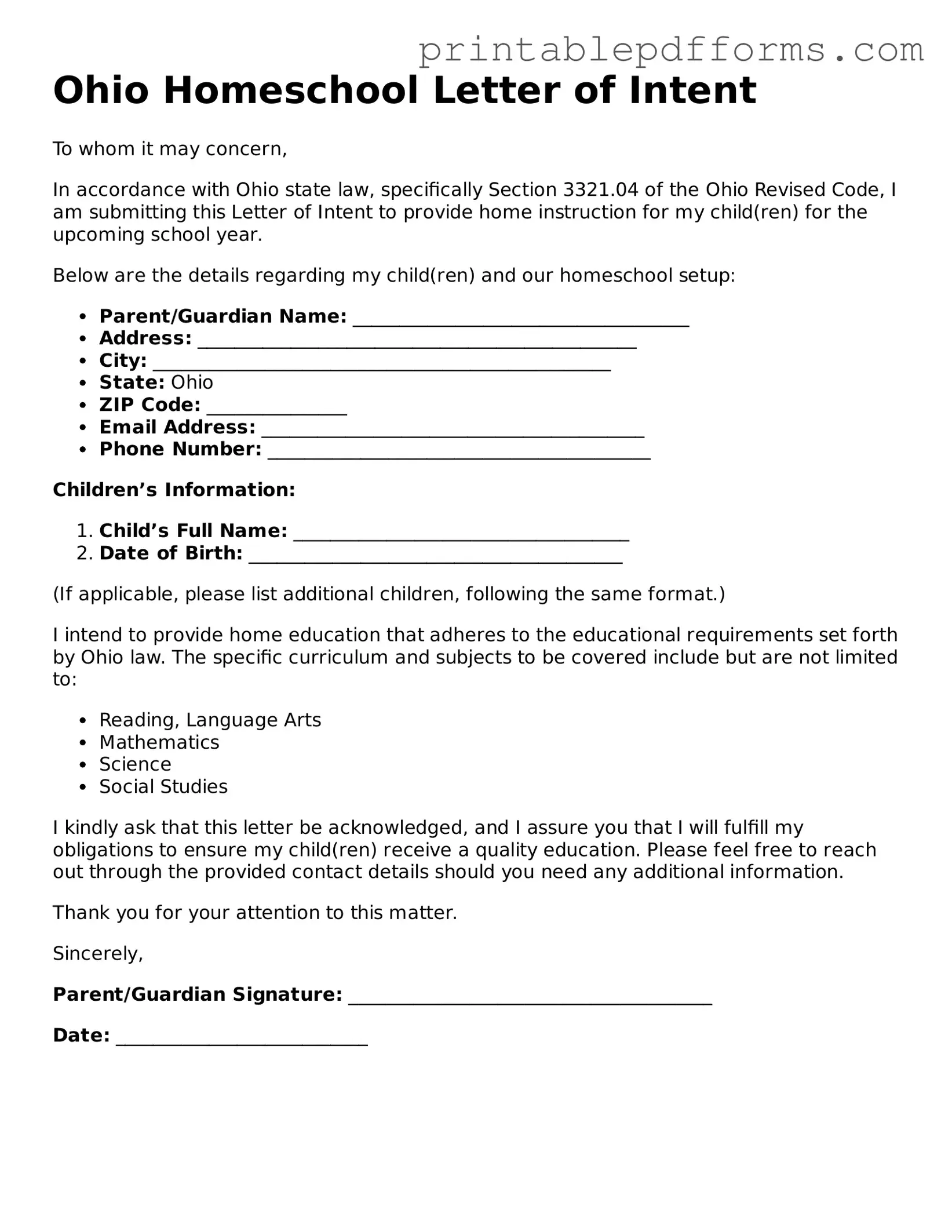Ohio Homeschool Letter of Intent
To whom it may concern,
In accordance with Ohio state law, specifically Section 3321.04 of the Ohio Revised Code, I am submitting this Letter of Intent to provide home instruction for my child(ren) for the upcoming school year.
Below are the details regarding my child(ren) and our homeschool setup:
- Parent/Guardian Name: ____________________________________
- Address: _______________________________________________
- City: _________________________________________________
- State: Ohio
- ZIP Code: _______________
- Email Address: _________________________________________
- Phone Number: _________________________________________
Children’s Information:
- Child’s Full Name: ____________________________________
- Date of Birth: ________________________________________
(If applicable, please list additional children, following the same format.)
I intend to provide home education that adheres to the educational requirements set forth by Ohio law.
The specific curriculum and subjects to be covered include but are not limited to:
- Reading, Language Arts
- Mathematics
- Science
- Social Studies
I kindly ask that this letter be acknowledged, and I assure you that I will fulfill my obligations to ensure my child(ren) receive a quality education.
Please feel free to reach out through the provided contact details should you need any additional information.
Thank you for your attention to this matter.
Sincerely,
Parent/Guardian Signature: _______________________________________
Date: ___________________________
